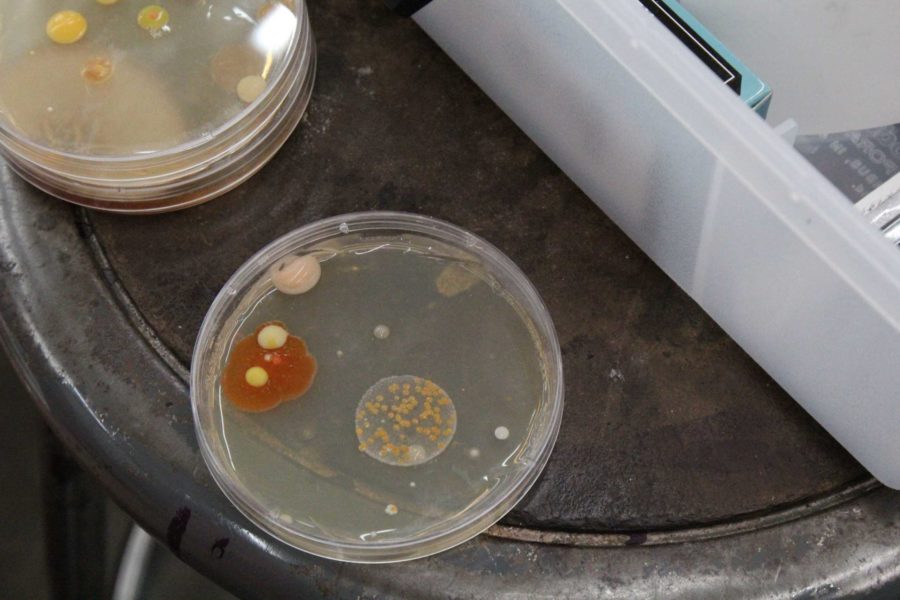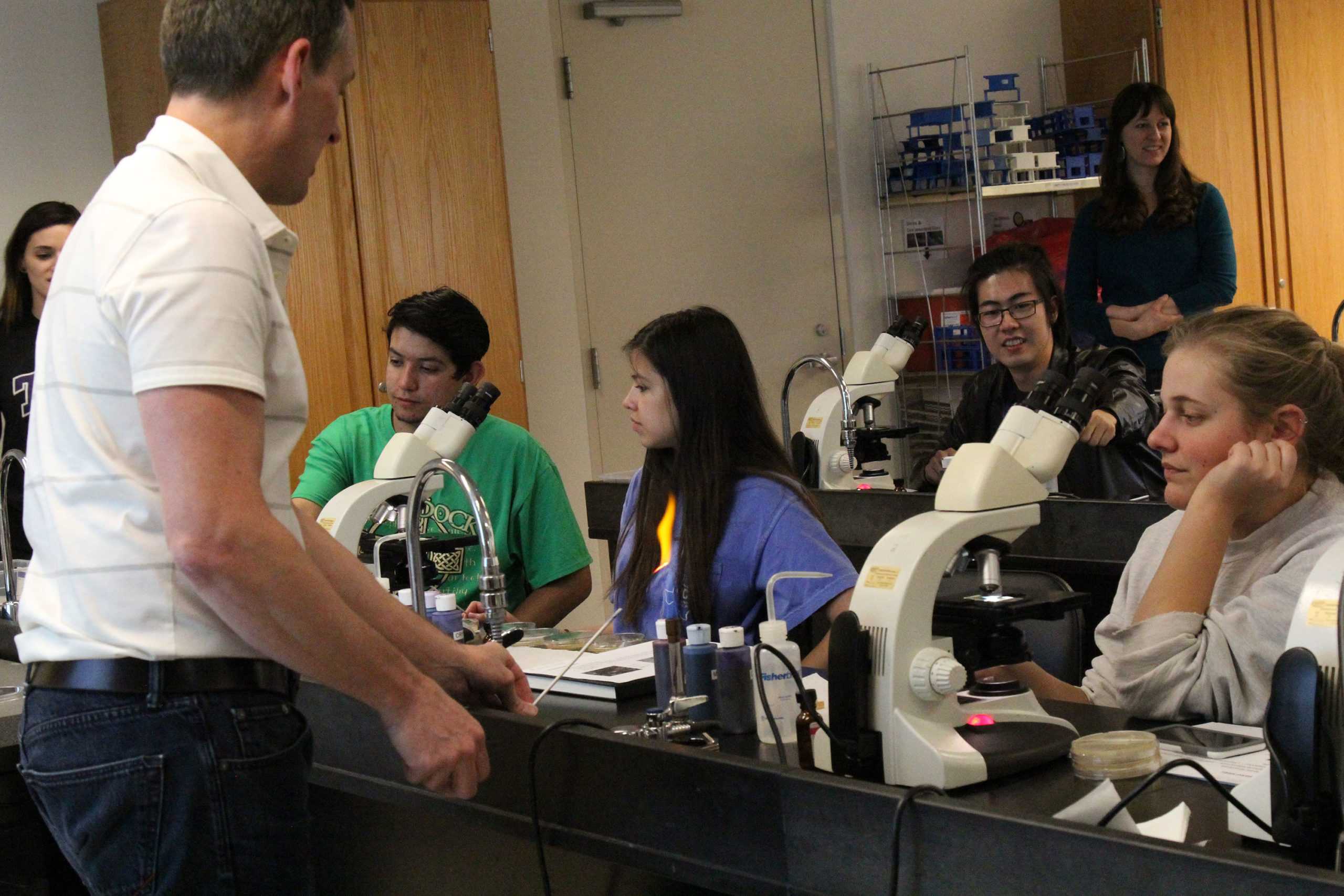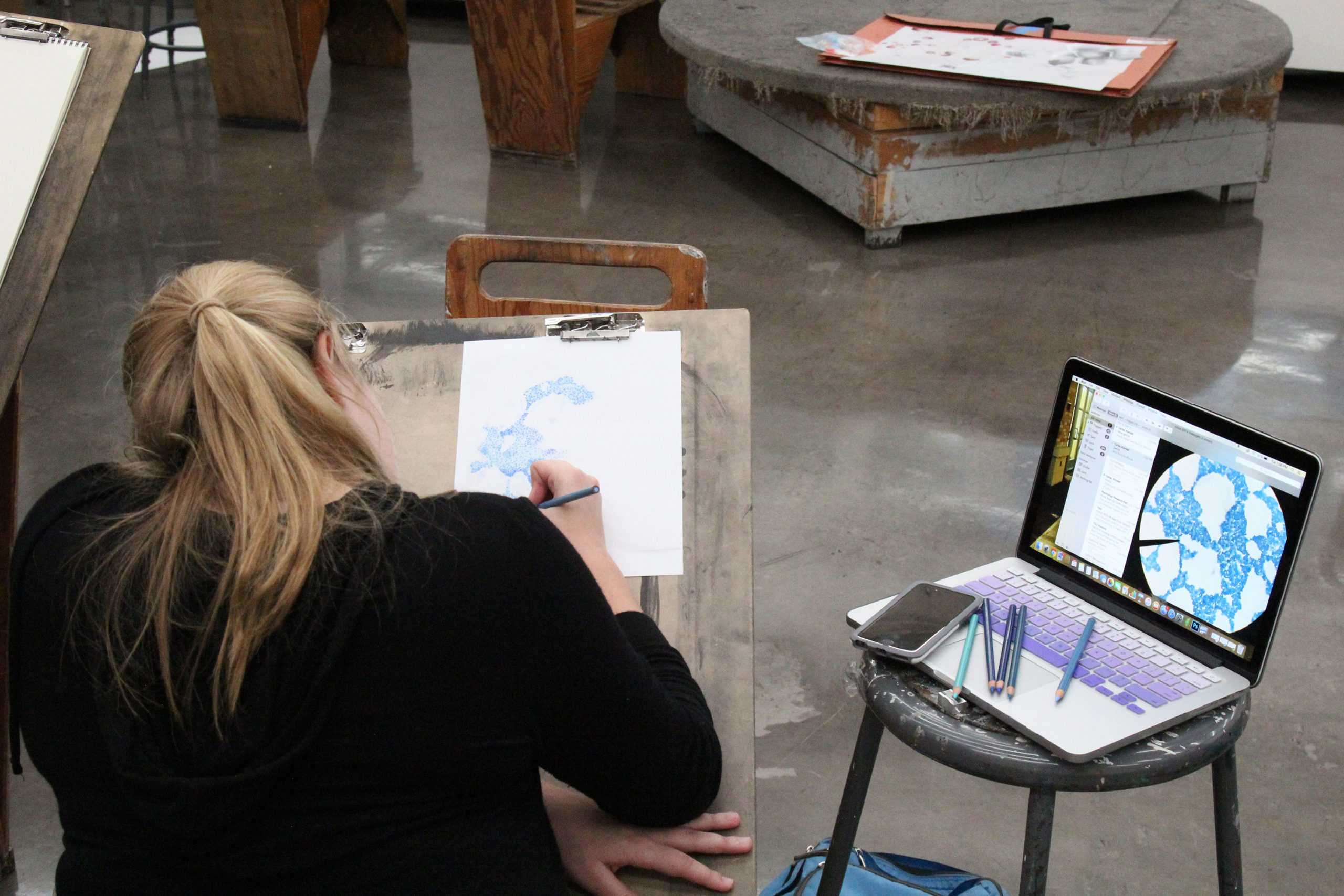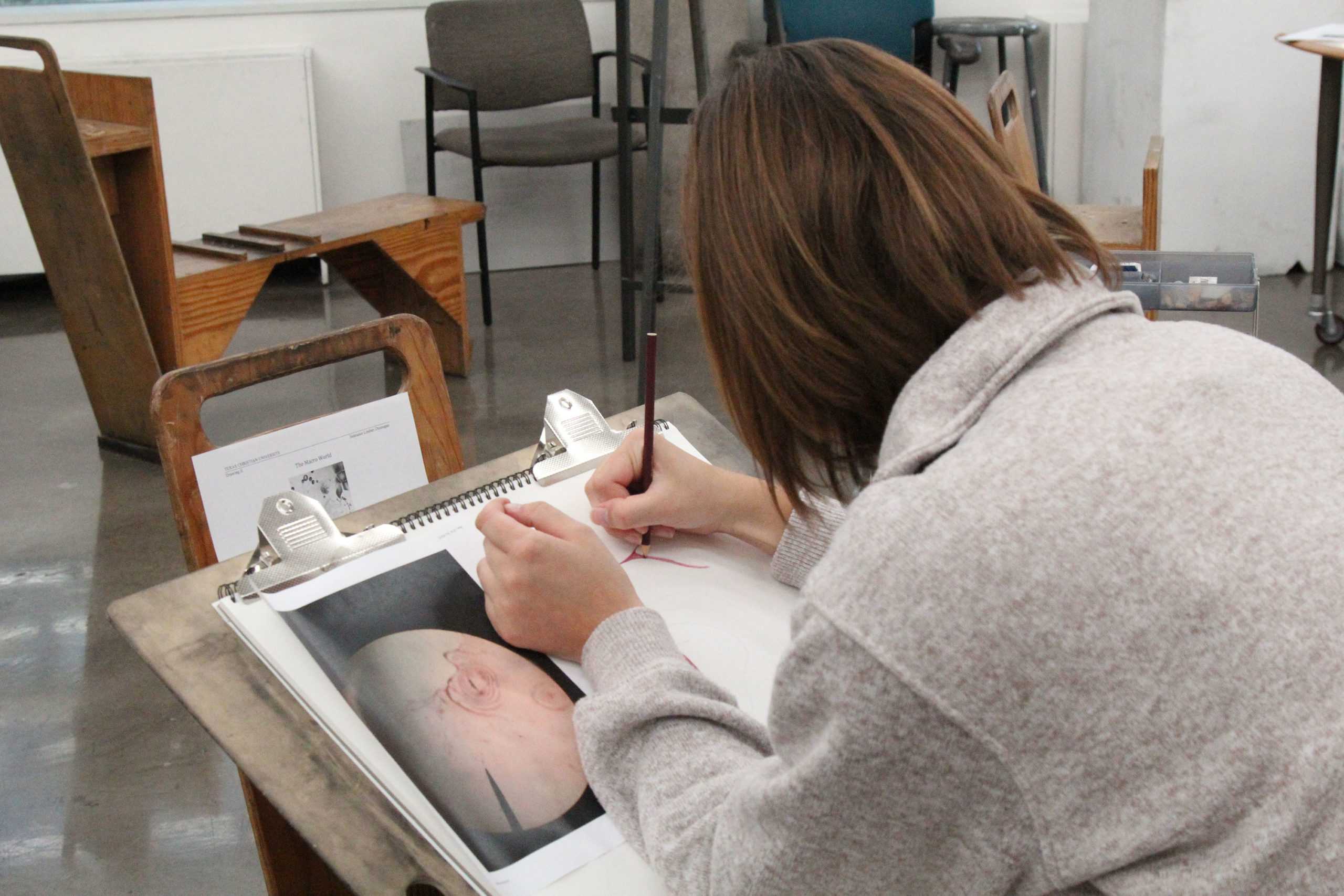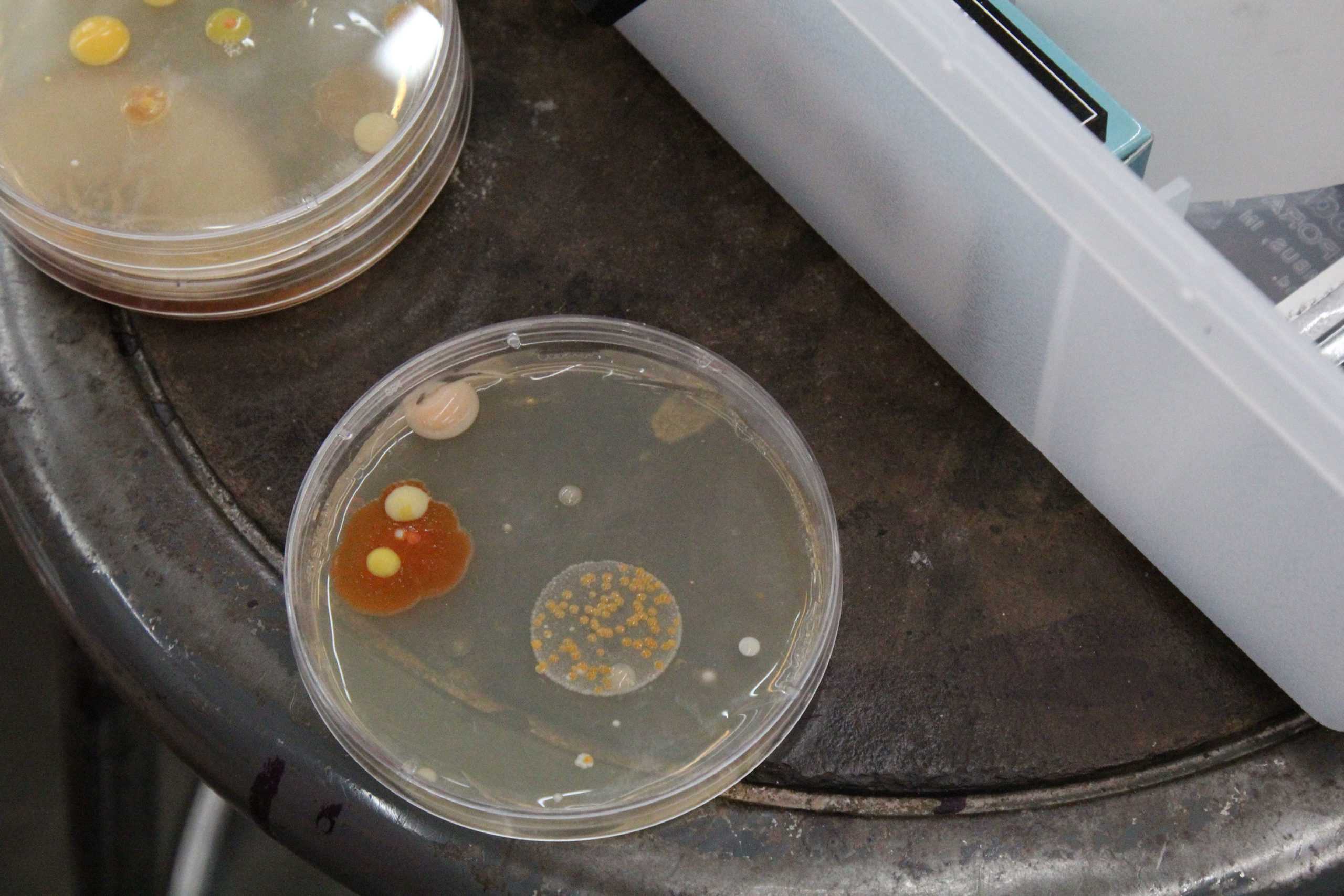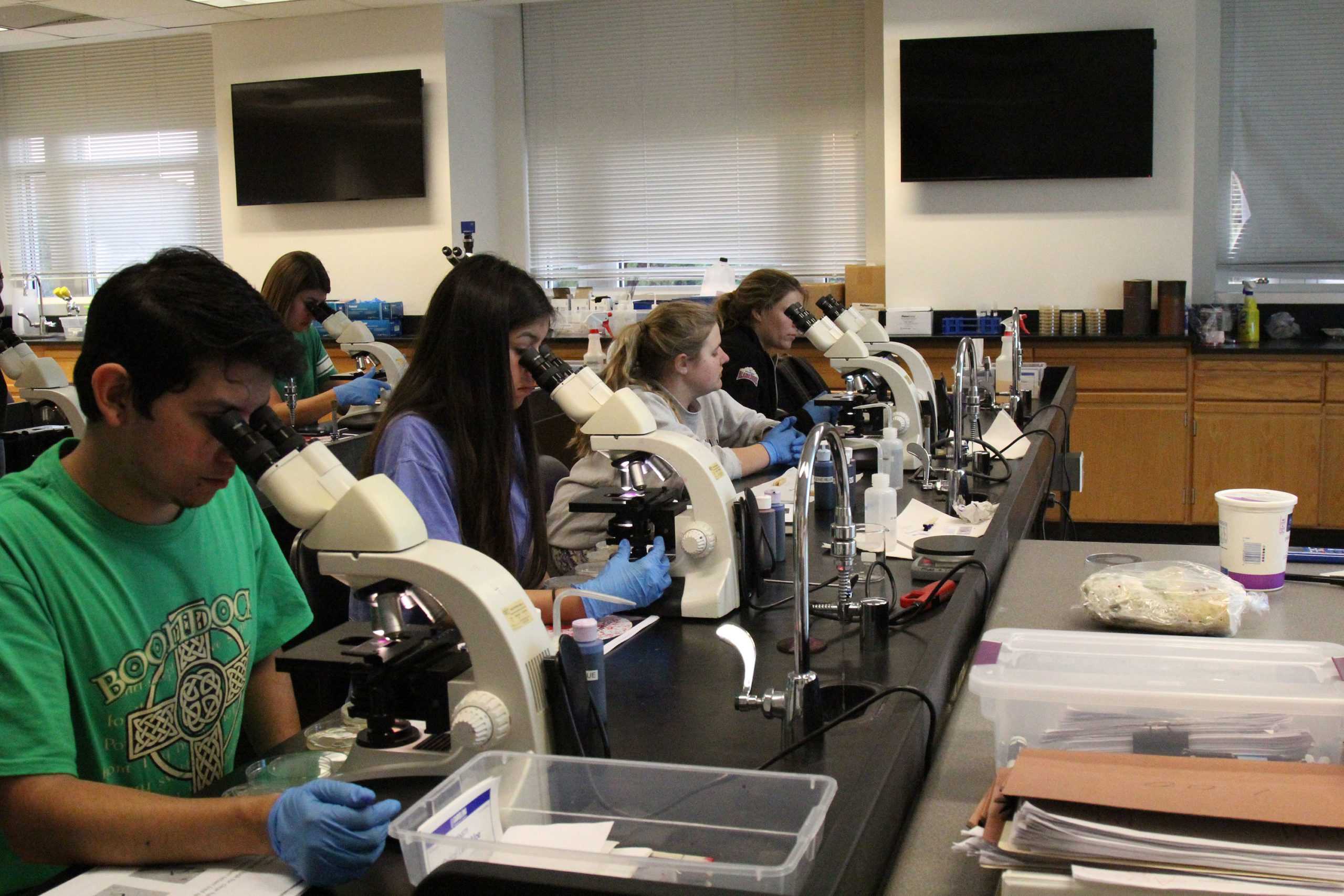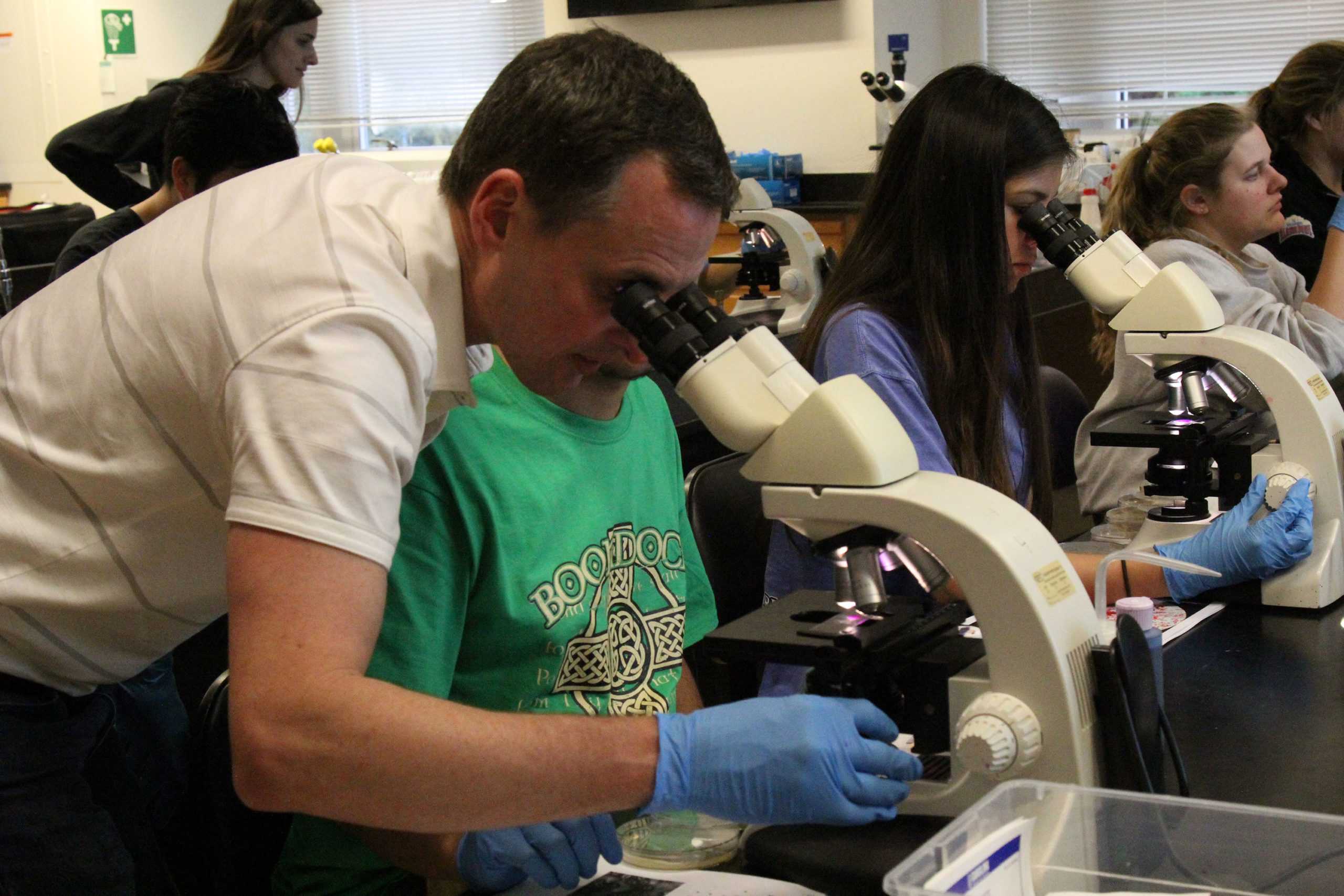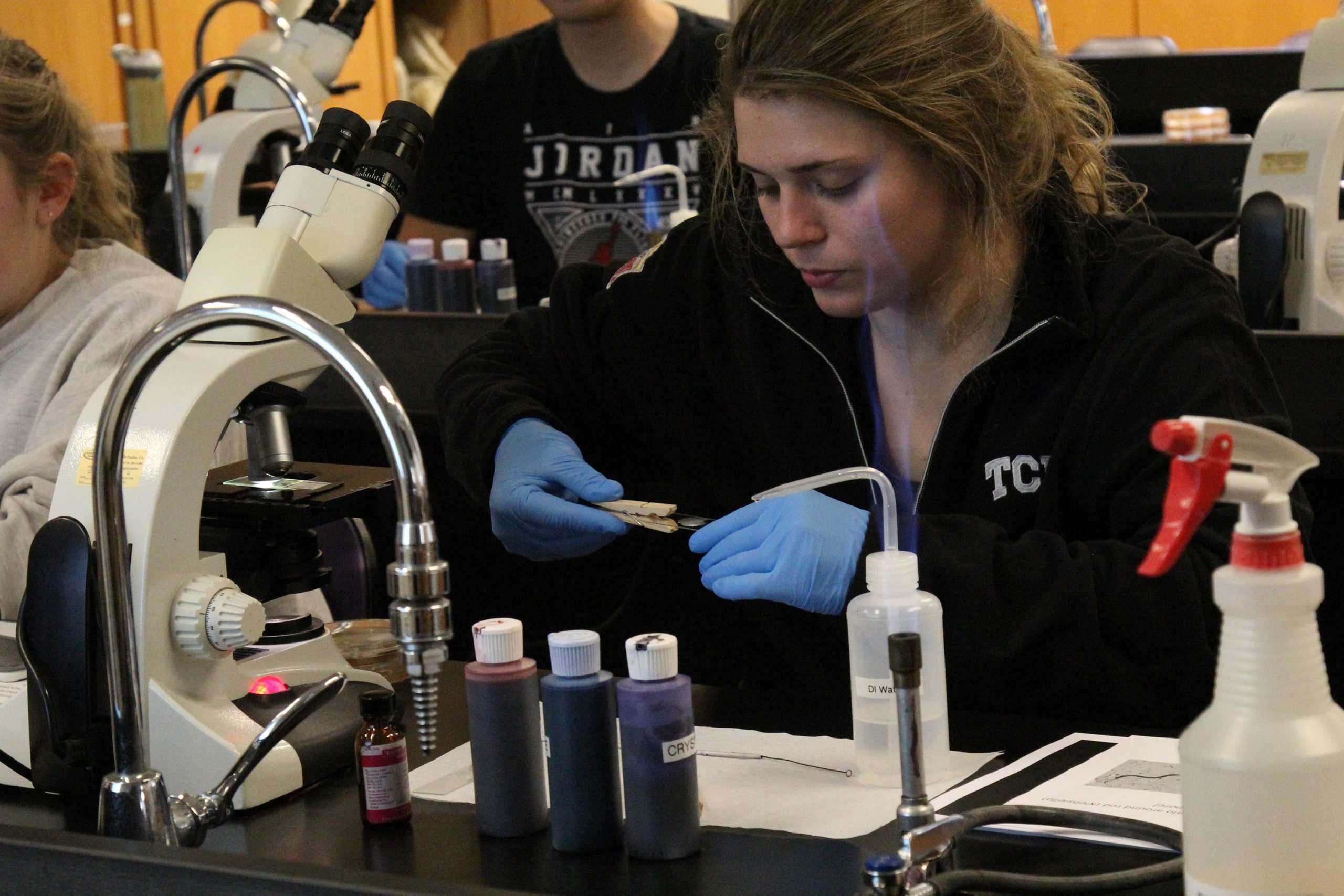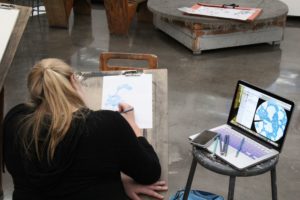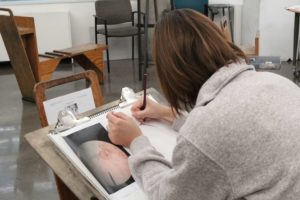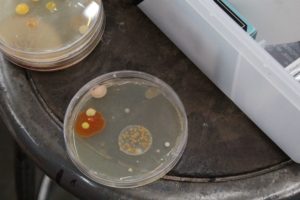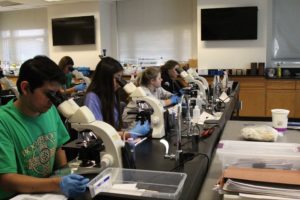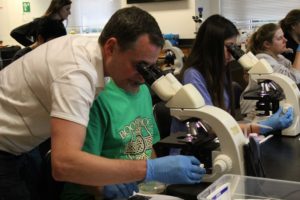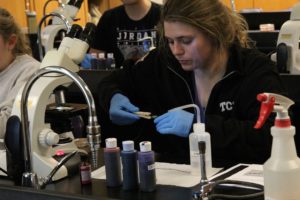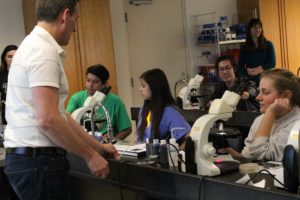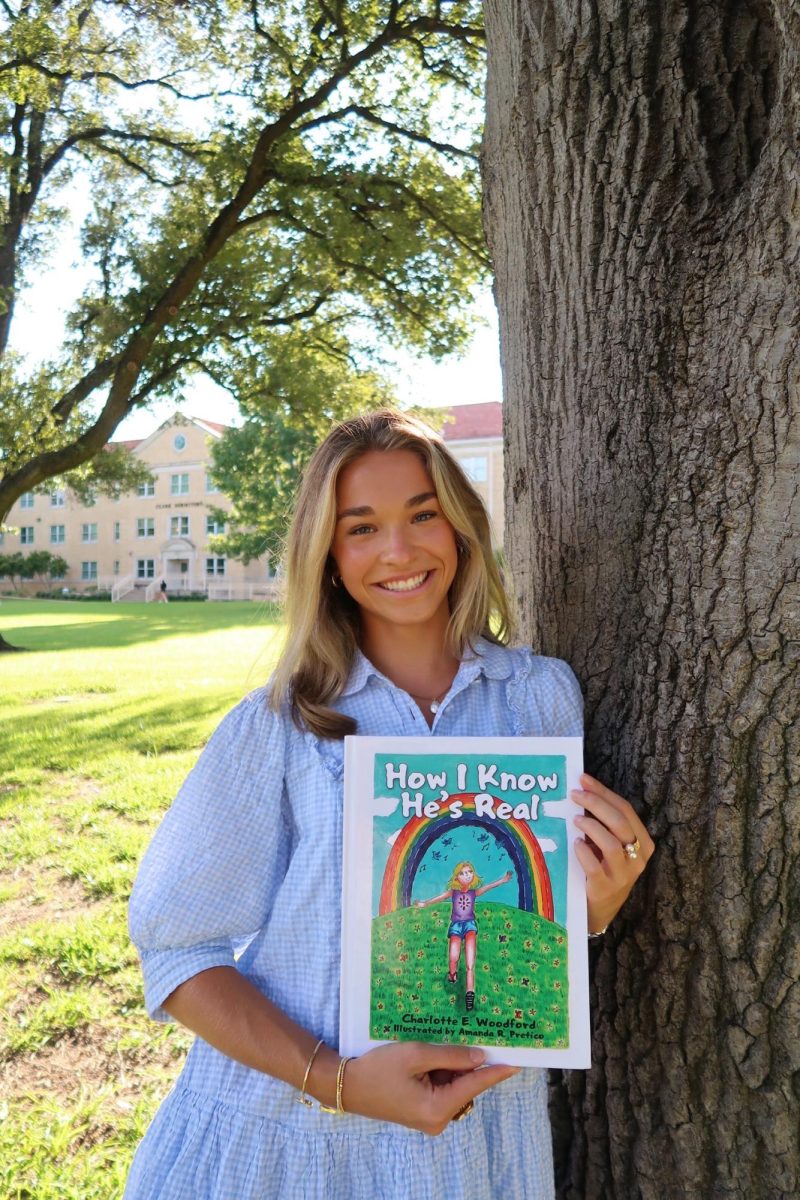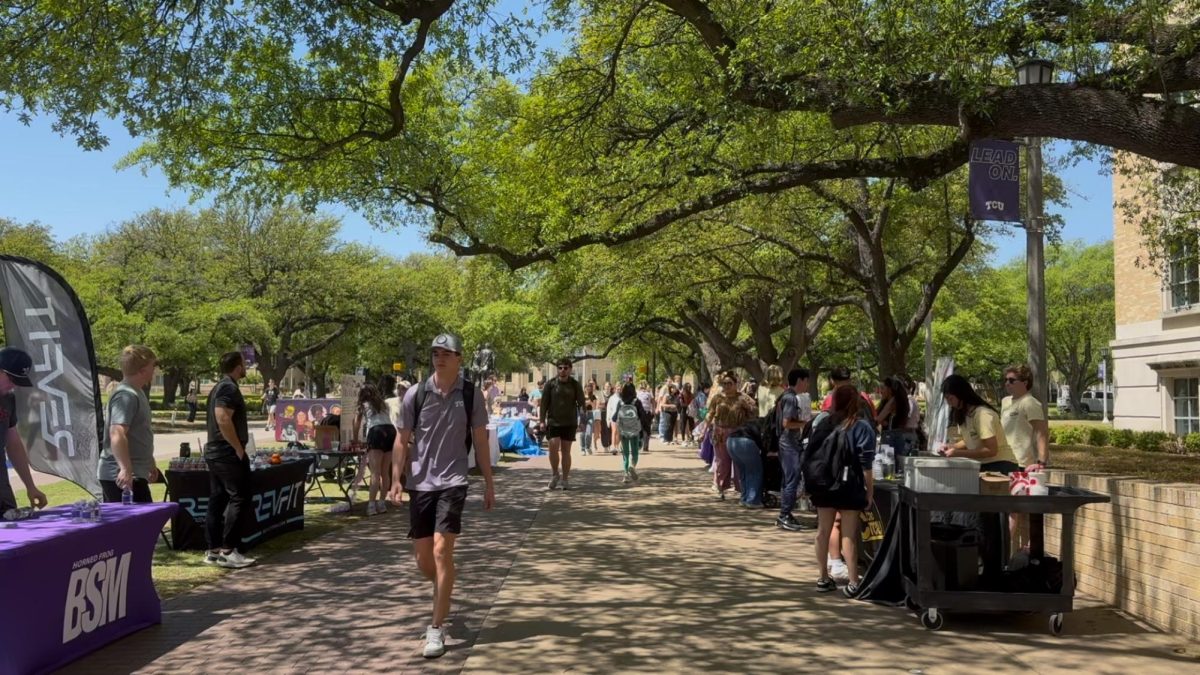The Science Meets Art initiative aims to have art students learn about science, and science students learn about art while painting and drawing what they see in microbiology.
Clark Jones,an instructor of biology, said students went out and collected swabs from different places where bacteria could be found and cultivated it, then examined it under a microscope.
“They were able to see a world of small bacterial and fungal objects that they would not have been able to see with their naked eye alone,” he said.
From their observations in the lab, they drew ideas for their artwork.
“The students have a chance to see how science connects to their life,” Jones said, “but even more importantly, they found new inspirations for art.”
Lindsey Dunnagan, an adjunct instructor of art, said art can help people understand complex subjects such as microbiology.
“We are surrounded by art in our daily lives, and it can be very impactful,” she said. “If art brings knowledge of things in science then, sometimes it can be more easily absorbed by layman.”
For Bianca Hursh, first-year neuroscience major and studio art minor, this initiative represented an opportunity to incorporate her two areas of study into one project.
Although she is a science major, this experience has allowed her to look at science in a different way, she said.
“The subtleties and some of the things are more beautiful in science than I would’ve really noticed by just looking at them in a science class, in a scientific setting,” Hursh said.
Science Meets Art is a part of the SciCom initiative which is intended to help science students communicate their work and research.
“I really believe in a cross and multidisciplinary approach to education,” Jones said. “This was a perfect way to add another component of that, so I hope that compliments SciCom.”
The students’ artwork will be entered for competition and displayed at the annual Student Research Symposium on April 8.

